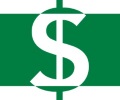Trade-weighted measures of the dollar continue to edge lower. The catalyst for modest weakness over the last 24 hours has been the Bank of Canada’s

Trade-weighted measures of the dollar continue to edge lower. The catalyst for modest weakness over the last 24 hours has been the Bank of Canada’s (BoC’s) decision to pause and perhaps end its tightening cycle. The move saw US yields tick modestly lower and weigh on the dollar as investors considered whether the Federal Reserve was on the verge of adopting a similar position – perhaps at the 22 March FOMC meeting. Next week’s Fed hike of 25bp looks locked in.
This all fits with the narrative of easing pricing pressures and a mild US recession, which could actually see the Fed easing and a weaker dollar stimulating Rest of World (RoW) growth. And the re-weighting of portfolios to RoW assets remains a key story for 2023.
For today, the data focus is on US 4Q GDP data. Our team forecasts a slightly below-consensus number and is mainly driven by lower imports and inventory building – not necessarily ‘good’ growth. We will also see the advanced goods trade balance for December which is expected to have widened again. Additionally, we will see the volatile durable goods orders for December and also the weekly initial jobless claims which so far are showing no signs of easing in labour market supply pressures.
We are not sure that DXY is ready to break below support at 101.30 just yet. And we see next week’s FOMC meeting as an upside risk to the dollar. But for the time being, expect DXY to stay offered in a 101.30-102.00 range.
Chris Turner
EUR: ECB blackout period finally arrives
After a few wobbles, it looks like markets have finally got the message from the European Central Bank that it will be hiking by 50bp at both the February and March meetings. A further 40bp of tightening is then priced over the summer. We look for just one more 25bp hike in May which will take the deposit rate to 3.25%. The ECB now goes into a blackout period ahead of next Thursday’s policy meeting – suggesting these tightening expectations may not move much further.
With the market pricing a 50bp easing cycle by the Fed in the second half of the year, this combination leaves EUR/USD at the highs of the year above 1.09. As we mentioned on Monday, investors may struggle to push EUR/USD through the 1.0950/1000 area ahead of next week’s FOMC/ECB risk events – though it looks like EUR/USD will stay bid.
One note of caution to the EUR/USD really, however, is that the EUR/USD risk reversal – the price investors pay for a euro call over a similar euro put option – is no longer shifting away from euro puts and in favour of euro calls. Perhaps this is a function of where the EUR/USD spot is. Yet this could suggest that investors and corporates see 1.10 as the top of a multi-month trading range.
Chris Turner
GBP: Peak rates?
Sterling has been holding its own against the euro and the dollar. The biggest event risk for sterling over the coming months is when the Bank of England calls time on the tightening cycle. We are looking for a 50bp hike next week and then a 25bp hike in March to conclude the cycle at 4.25%. But presumably, at some point, the BoE will have to signal the top and we have already seen investors lose conviction over a peak in the cycle at 4.50%. The peak is now priced at around 4.37%.
There is probably substantial short sterling positioning on the crosses in expectation of the turn in the BoE cycle. This makes for a bumpy ride. But overall we are happy with our end 1Q23 forecast for EUR/GBP at 0.89, which will probably leave cable trading towards the lower end of a 1.20-1.24 range.
Look out for UK January CBI retail sales figures today – likely to confirm a downtrend on the back of weak consumer confidence and squeezed real incomes. Cable to trade well within a 1.2350-1.2450 range.
Chris Turner
ZAR: 50bp hike should help the rand
Today sees the South African Reserve Bank meet to set interest rates. The majority of forecasters are looking for a 50bp hike to 7.50%, though a few are looking for a 25bp hike. Like many, the SARB is dealing with above-target inflation – now at just over 7% year-on-year versus the SARB’s 3-6% target range. Markets price this hike as the last in the cycle and price the policy rate pretty flat at near 7% over the next three years.
Peak interest rates are music to the ears of bond investors and one of the best-performing asset classes this year is the EM local currency government bond index, currently up 4.2% year-to-date. South Africa still has a near 3% weighting in such an index, meaning that the rand should be a beneficiary should investors add to positions in EM local currency bonds.
However, the rand has been underperforming this year and one would have expected the huge reversal in USD/CNY to be dragging USD/ZAR much below 17.00. That has not happened, perhaps because of the weak domestic demand outlook in South Africa amid ongoing challenges in energy supply. Yet a softer dollar environment and the China reopening story should remain a bullish cocktail for the rand and a hawkish SARB statement today could be enough to push USD/ZAR back to the 16.90 area. Medium-term, we are becoming a little more bullish on the rand.
Chris Turner
Source: ING
news.google.com
